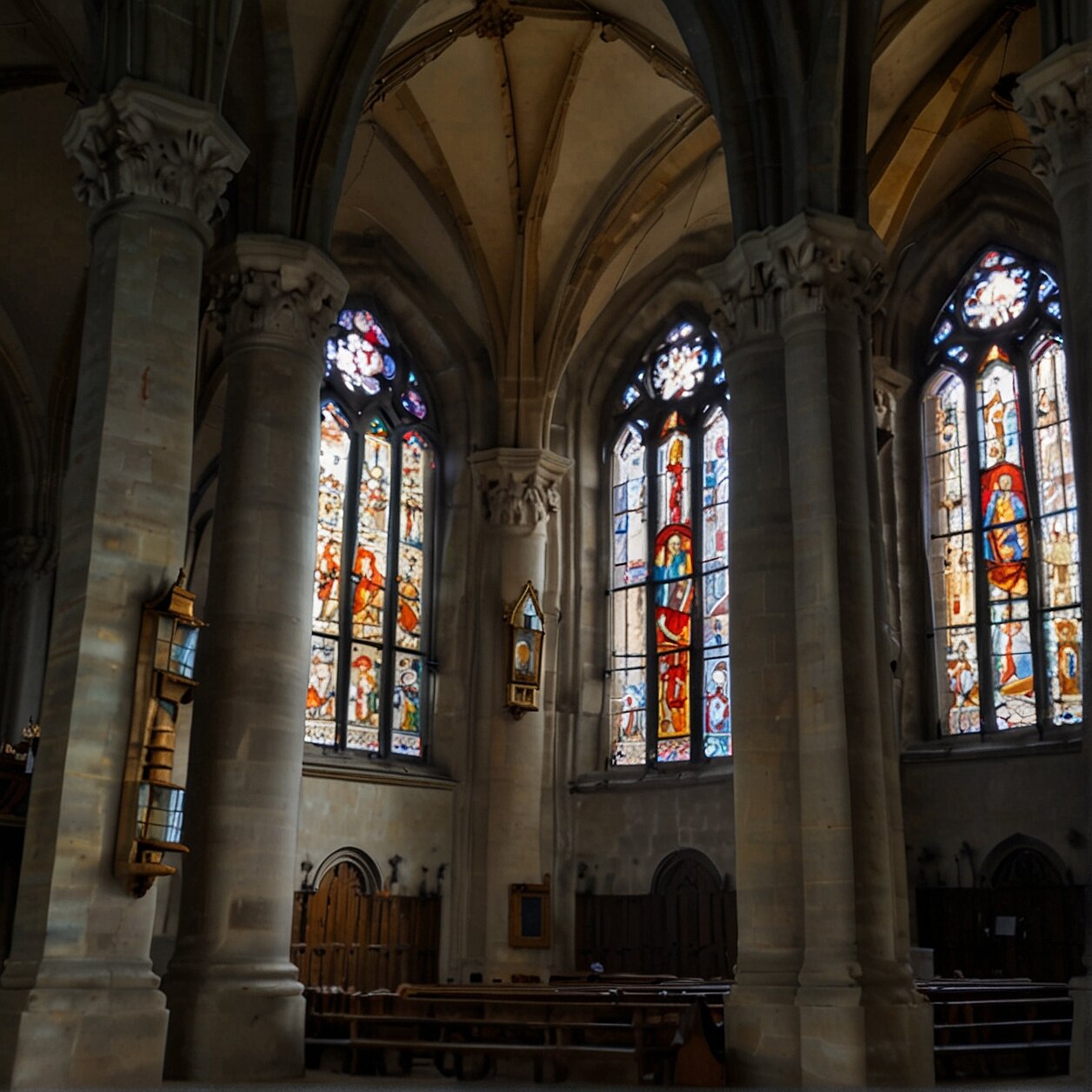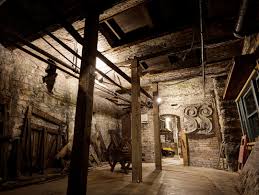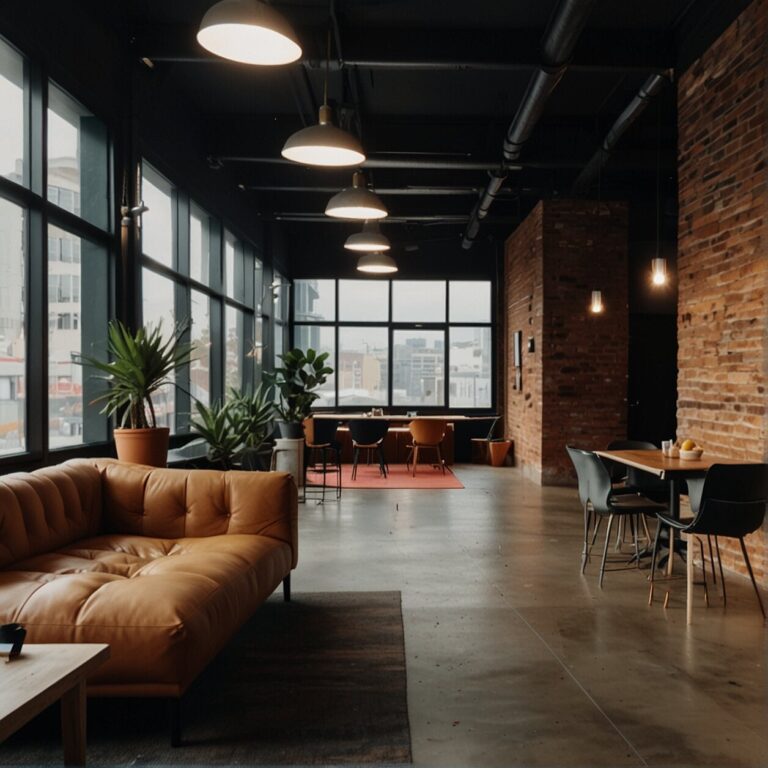Exploring the Stained Glass Towns of Alsace, France
Step beyond the traditional tourist trail and discover the quaint, charming towns of Alsace. Framed by lush vineyards and the breathtaking Vosges Mountains, these medieval locales are draped in history, romance, and a sense of timeless charm. What sets them apart, however, is their extraordinary mastery of a unique art form: stained glass.
“Stained glass, the play of light that breathes life into color, is an ancient art that melds poetic imagination with exacting craftsmanship. In Alsace, it takes on a life of its own.”
Far from being static decorations, stained glass tells tales of bygone eras, legends, and lives, casting a surreal dance of colors with every glance of sunlight. They’re not just windows—they are storytellers, opening portals into Alsace’s spiritual, cultural, and historical landscapes.
You’re about to embark on a captivating journey through Alsace, exploring its vine-covered valleys, houses with timber framing and cobblestone streets, all veiled under the mesmerizing beauty of stained glass. You’ll delve into the history of this incredible craft and discover its intricate processes, innovative techniques, and the talented creators. So sit back, and let the allure of Alsace and its brilliant glasswork lead the way.
Famous Stained Glass Towns in Alsace: A Closer Look
Immerse yourself in the beauty of Alsace, where the art of stained glass serves as a vibrant threshold into the region’s past. Each town flaunts its unique artistic heritage, as the countless local churches and cathedrals sparkle with gems of colored glass. Consider beginning your journey in Wissembourg. Renowned worldwide for the head of Christ from the Abbey Church of Saint Peter, this piece is not just famed for its stunning craftsmanship but equally appreciated due to its innovative glass painting techniques dating back to around 1060. Afterwards, make your way to Slestat, another town that will surely steal your heart. There, you can admire St. Katherine’s window from around 1425-50. This striking example of Alsatian stained glass painting skillfully brings together art and story, forming a grand display of regional heritage.
Techniques and Innovations in Alsatian Stained Glass Production
Think back to the stained glass you’ve seen in the past. The bright, bold colors that tell a fascinating tale or showcase an intricate design – it didn’t happen overnight. The technique of stained glass is a fiercely guarded secret among fabrication studios, deeply rooted in centuries of tradition.
When you stroll through the quaint towns in Alsace, you’ll be stepping into a historical treasure trove where stained glass production has been honed to an art form. And over the centuries, various innovations have been introduced to perfect this craft.
Notably, the region witnessed a revolution instigated by the genius of Labouret. His radical approaches fostered a remarkable evolution in the art of fashioning stained glass. His techniques revolutionized the sector, offering new ways to tell vivid, multicolored stories on beautiful glass canvases.
American studios, too, began experimenting with novel methods in stained glass production. Noteworthy among them are dalle de verre, etched, sandblasted, and fused glass. Yet, despite these advances, the handiwork of Alsace’s artisans remains unique, often highlighting the unique linear potential of leadwork in stained glass, an emphasis inherited from the German School ‘s fascination and carried forward by Alsatian crafters.
Moreover, techniques such as sensitively articulated leading and a focus on unadulterated glass that simultaneously show off meticulous craftsmanship and delicate artistry independent of elaborate painting, much like the Flemish stained glass designs, are predominant in Alsace’s stained glass production.
As you marvel at these stained glass masterpieces in Alsace, remember that there is more than meets the eye – it’s a testament to countless hours of hard work, tradition, and innovation. The art of making stained glass is both a craft and a historical journey, and Alsace is just the place to begin that expedition.

Techniques and Innovations in Alsatian Stained Glass Production
As you journey deeper into the world of Alsatian stained glass, it’s essential to recognize the pivotal techniques and innovations that have sculpted this timeless craft. The artistry and skill possessed by the Alsatian glassmakers are second to none, producing pieces that are distinctively marked by graphic refinement and a mesmerizing lightness of color – a global testimony of the French and English influences in the region.
One of the hallmark techniques in Alsatian stained glass production is the Gothic tradition. This aesthetic draws heavily from both symmetry and visual storytelling, illuminating spaces with vibrant colors and patterns. The use of Gothic stained glass in Alsace not only signifies the town’s historic past but also reflects the global impact of this artistic direction on the stained glass craft.
Forefront in the revolution of stained glass crafting and its technicalities was Henri Labouret, a renowned French artist, and glassmaker. Labouret’s work provided a springboard for new and innovative approaches, particularly the dalle de verre technique. By embedding thick chunks of colored glass in a concrete or epoxy resin panel, a mosaic-like effect was created, bringing an intriguing depth and vibrancy to the work.
Such ingenuity has not stopped with dalle de verre alone. The artists and craftsmen of Alsace continue to push the boundaries by experimenting with modern techniques in glass production. With etched, sandblasted, and fused glass, Alsatian artisans have broadened the horizons of stained glass artistry. These methods have created unique textures and effects, fueling an ongoing evolution in this ancient craft.
In fact, American studios have taken inspiration from the Alsatian stained glass craftsmanship, incorporating and improving aforementioned techniques. The stained glass technique was once a fiercely guarded secret by fabrication studios. But today, it’s an open treasure chest of knowledge and innovation, thanks in no small part to authorities like Patrick Reyntiens, who authored ‘The Technique of Stained Glass’ and so generously propagated the knowledge.
At the heart of every innovation and skillful maneuver are the enduring efforts of dedicated glassmakers and an unwavering desire to respect tradition while standing on the cutting edge of ingenuity. It’s this dynamic combination of reverence for history and the pursuit of progress that sustains the extraordinary legacy of Alsatian stained glass production.
Behind the Scenes: How a Stained Glass Window is Made in Alsace
So, you might wonder, what does it take to create a piece of art as stunning as a stained glass window in Alsace? To sum up, it means mastery of an age-old craft and a sprinkling of contemporary techniques.
Step 1: Design
Firstly, every stained glass window begins as a simple sketch. An artist expertly creates a full-sized drawing, paying careful attention to details. From the grand theme down to the most minute expressions and colors – every aspect is precisely planned in this stage.
Step 2: Glass Selection
Moving to the second phase, the selected design is brought to life with an array of vibrant glasses. The artist chooses different types of glass based on their color, texture, and transparency, giving the final artwork its unique personality and depth.
Step 3: Glass Cutting
Once glass selection is done, each piece is meticulously hand-cut to match the design. This steep requires specialized tools and a steady hand, since even a small mistake might mean starting all over again.
Step 4: Painting And Firing
As per the design, certain parts of the cut glass are painted by hand for adding detail and dimension. The painted glass pieces are then fired in a kiln to make the colors permanent – an essential step to ensure the resilience of these vibrant artworks.
Step 5: Assembly
This step calls for dexterity, as each glass piece is carefully placed within lead strips (known as “cames”) following the original design. This structure is then soldered at the joints for stability and durability.
Step 6: Installation
The final assembly, now called a stained glass window, is ready to be installed. Each artwork continues to narrate its story for years to come, becoming a timeless part of Alsace’s architectural identity.
Creating a stained glass window in Alsace is thus a painstaking process yet immensely rewarding – a example of how art and tradition can bring out something timeless and beautiful to gaze upon.
Guided Tours: Embrace the Stained Glass Splendor of Alsace
In your journey through the charming corners of Alsace, you won’t want to miss the delight of guided tours, ideal for immersing yourself in the rich world of Alsatian stained glass. Initiate your exploration through renowned locations like the Gothic cathedral at Chartres, which proudly showcases the time-honored craft of Gothic builders and artisans. Walk through the aisles, illuminated by the enchanting colors of the monumental stained glass windows and let them take your breath away.
A stop you simply cannot skip is the Abbey Church of Saint Peter, Wissembourg. With its head of Christ stained glass dating back to approximately 1060, this site is a cherished piece of Alsatian history that provides a moment to appreciate the advancement of glass painting in the area. It’s not just a tour, it’s a step back in time.
Further along your journey, take the chance to interact with the present day craftspeople. Observe the passion and focus they put into each fragment of glass, each drop of color, and each carefully crafted piece. Witness first-hand the techniques borrowed from the German School, the association that reinstated stained glass as a mainstream art form. Engage in dialogues, ask your questions, get to know the movers and shapers of the industry. It’s a one-of-a-kind experience where history, craft, and culture intertwine beautifully.
To conclude your tour, why not carry a piece of Alsace back home? Many workshops have gift shops where you can purchase stained glass souvenirs. From intricate window hangings to delicate jewelry, there’s an array of stunning items waiting to be discovered. While you’re there, don’t forget to inquire about the U.S. stained glass studios–a fascinating aspect of modern stained glass art.
In Alsace, each stained glass masterpiece seeps history, talent, and dedication. So take a moment to bask in the radiant colors, let the mysteries unfold, and the romance of the craft sweep you off your feet. This is not just glass, it’s a living and breathing piece of Alsace, waiting to be explored, admired, and treasured by you.

Visiting the Glass Makers: A Unique Experience in Alsace’s Workshops
Let’s take you on a journey. Imagine stepping into a bustling workshop in one of Alsace’s quaint towns, where the air hums with the heritage of centuries-old tradition and innovative techniques. This is a space where artists and craftsmen combine their skills and passion to create stunning works of stained glass.
The artisans here have mastered the fine art of stained glass making, passed down through generations. One of these crafts, dalle de verre, captured by Labouret, includes everything from figure work to delicate detailing and even lettering. You’ll watch in awe as they transform blobs of molten glass into intricate, vibrantly colored panels.
As you explore different stalls, you’ll notice the influence of the Milan school of glass painting and the unique linear potential emphasized by the German School. The latter is especially evident in the stunning leadwork, each segment carefully crafted and assembled to create beautiful depictions.
You might also spot a piece reminiscent of the head of Christ from the Abbey Church of Saint Peter, Wissembourg. Created around 1060 AD, this renowned artifact exemplifies the advanced glass painting techniques practiced in Alsace.
Not to overlook, glimpse the intriguing variety of styles on display. From the colourful Arabic style inspired by the 1937 Paris Exposition, to the intricacies of pate de verre, you never know what awe-inspiring work you will encounter next.
Visiting these workshops is not only an educational adventure but also a unique opportunity to appreciate the art of stained glass. You may even bring home a beautifully crafted souvenir, reminding you of the Alsatian tradition of stained glass making.
FAQ’S
If you’ve reached this point, you’re probably brimming with queries about this enlightening topic. You might be wondering which towns to visit, which artists to look up, or where to take your passion for stained glass art to the next level in Alsace. To satisfy your curiosity, we’ve curated this FAQ section, addressing the questions most frequently asked by our readers, travelers, and art enthusiasts like you. Read on to clear your doubts!
What towns in Alsace are known for their stained glass?
If you’re a fan of fine art and craftsmanship, Alsace would be a delightful destination for you. Interestingly, there are several towns and cities in the region that boast centuries-old masterpieces of stained glass.
The town of Wissembourg is notable for its Abbey Church of Saint Peter, home to a well-regarded head of Christ stained glass piece, dating back to approximately 1060. This charming town offers a rich piece of history in every corner, with the stained glass being an embodiment of its medieval past.
Another noteworthy location is Slestat, hosting the Alsatian window of St. Katherine, a prominent example of Gothic stained glass dating from around 1425 to 1450. Slestat is a magnet for art connoisseurs aiming to discover traces of Middle Ages craftsmanship.
Although not towns, Alsace cities like Strasbourg and Mulhouse also house magnificent stained glass artworks within their prominent cathedrals and museums, tracing back the history of this craft in the region.
To sum it up, whether you’re stepping into grand cathedrals or roaming through small workshops tucked away in quaint towns, Alsace offers an immersive experience into the world of stained glass arts.
Are there any famous stained glass artists from Alsace?
Indeed there are. Although stained glass is a craft associated with various regions across the world, Alsace boasts its fair share of skilled artists known for their mastery in this field. For starters, let’s talk about Jean-Adolph Dannecker. He is primarily famed as a gingerbread baker from Strasbourg, but it is his enduring passion for stained glass art that has truly immortalized his name in Alsatian history. In 1764, he wrote to the Superintendent of the King’s Buildings, Charles Nicholas Cochin, advancing efforts to reestablish the stained glass craft in Alsace. His dedication has certainly left a lasting mark on the art form.
While thinking about stained glass artistry from Alsace, it would be an oversight not to mention the artists who have garnered reputations beyond the region. Consider the studios of Emil Frei in St. Louis, R.Tolan Wright in Cleveland, and Nicola D’Ascenzo in Philadelphia. These studios give credit to the influence of Alsatian techniques, and they are noteworthy ambassadors of the local artistry globally.
Despite these artists’ significant contributions, remember that stained glass is not a solitary art. It’s a symphony, where artists often collaborate to create wondrous masterpieces. Keep this in mind as you meander through the glass-bedecked streets of Alsace, each pane a testament to generations of craftsmanship.
Are there any festivals or events related to stained glass in Alsace?
Indeed, Alsace hosts events that provide a deep dive into the world of stained glass art. The Alsacian towns, known for maintaining tradition, organize delightful annual events dedicated to celebrating the artistry of stained glass. One of the standout events is the Strasbourg Stained Glass Festival, a vibrant affair that gathers stained glass enthusiasts and artisan craftsmen from around the world.
During the festival, you can enjoy the vivid exhibitions featuring historical and contemporary stained glass works, nuanced demonstrations of time-honored production techniques, and exciting interactive workshops that provide hands-on experience in glass cutting and glass painting. This jubilant celebration allows attendees to uncover the finest details of this refined art form in a festive atmosphere.
Plus, many local artists and glass workshops open their doors to the public during these events, offering unique insights into the creation of these stunning masterpieces. Regardless of your familiarity with stained glass, these events are a fascinating peek into the colorful world of Alsatian glass craftsmanship.
Can I buy stained glass souvenirs in Alsace?
Absolutely, you can! Taking home a piece of Alsace’s artistic heritage in the form of a stained glass souvenir is not only possible, but it’s also highly recommended. Numerous Alsatian shops, particularly in larger towns, offer a colorful assortment of stained glass items. These range from beautiful window hangings showcasing classic themes, to jewelry and trinkets perfect for gifting or keepsakes.
If you’re looking for something made by skilled artisans, it’s worth visiting the studios dotted throughout Alsace. Here, expert craftsmen design and create spectacular pieces of art, often right before your eyes. Not only do these intricate pieces make great home décor, but they’re also a unique and lasting memory of your visit.
Remember, the colors, shapes, and designs found on each stained glass piece are each intricate parts of a tale that bonafide Alsatian glassworkers have been telling for hundreds of years. So, any purchases you make are not simply souvenirs, but pieces of history – fragments of a rich tapestry that is the legacy of Alsatian artistry.
Are there any museums or galleries showcasing stained glass in Alsace?
Indeed, Alsace, which is renowned for its stained glass artistry, is home to several museums and galleries where this craftsmanship can be marvelously appreciated. You will find everything Guided tours are available, allowing you to delve even deeper into the processes, techniques, and history of Alsatian stained glass production.
Also, the Unterlinden Museum in Colmar is noted for its collection of medieval and Renaissance stained glass windows. Here, you’ll find Alsatian window of St. Katherine (c.1425-50), a splendid example of the skill of Germanic glass painters from the region.
If you yearn for more, plan a visit to Strasbourg Cathedral, where you can behold the awe-inspiring rose window made of brilliant stained glass. This architectural marvel features colorful narratives from the Bible, providing a majestic canvas that beautifully captures the light.
In a nutshell, Alsace is a treasure trove for anyone who appreciates the beauty, history, and craftsmanship of stained glass. Do add these venues to your itinerary to truly appreciate this age-old craft on your next visit to this enchanting region.







